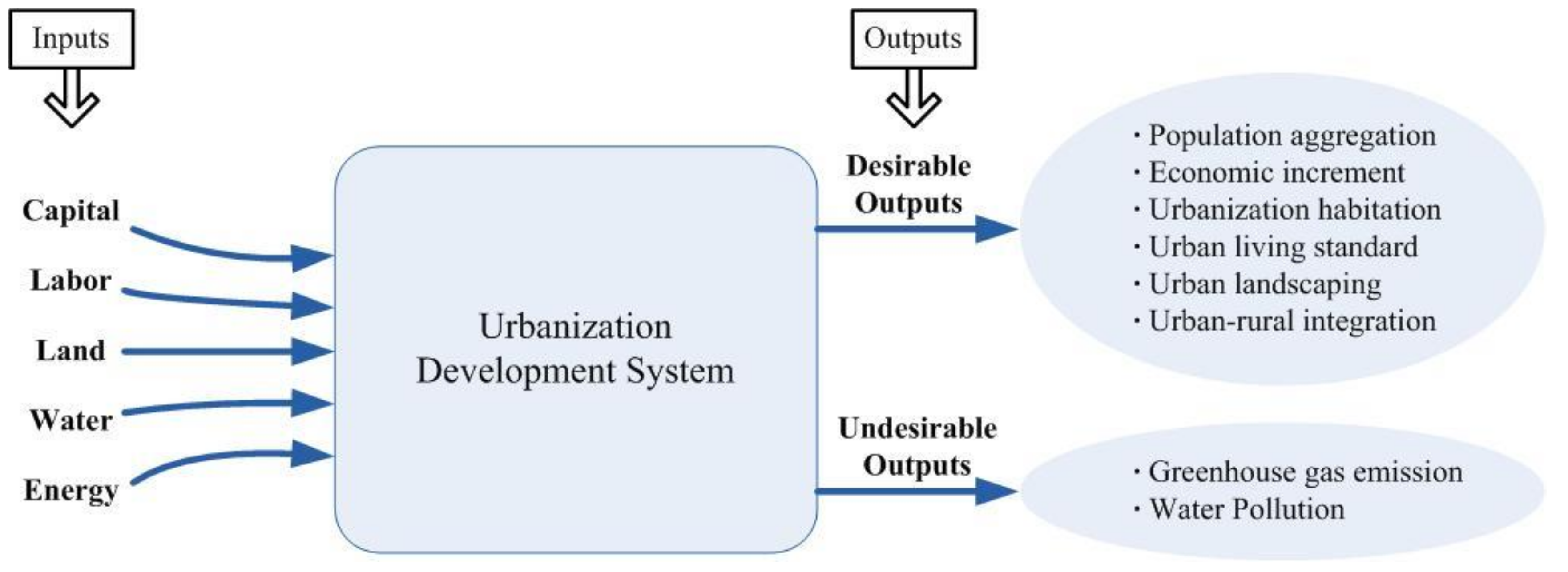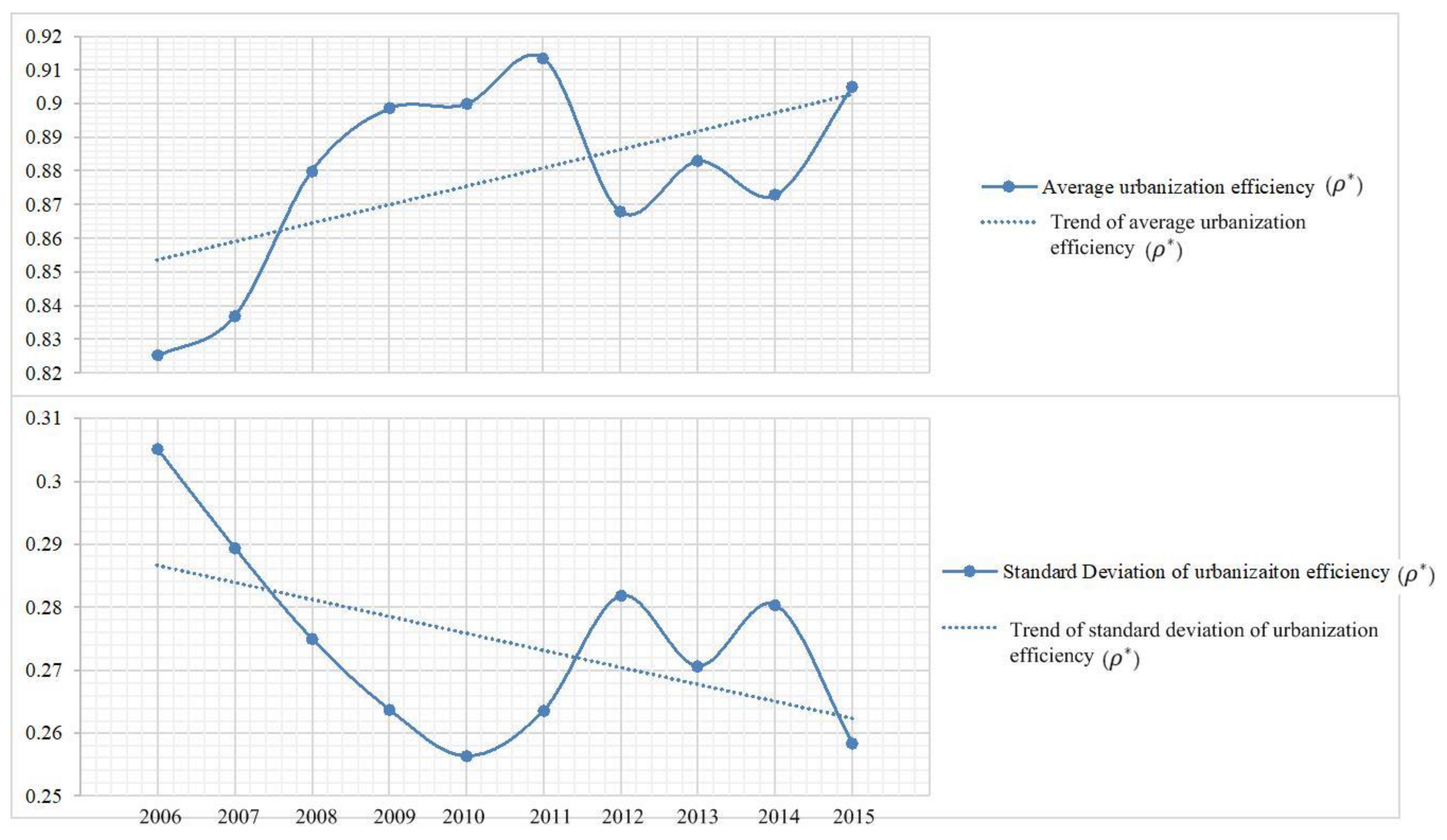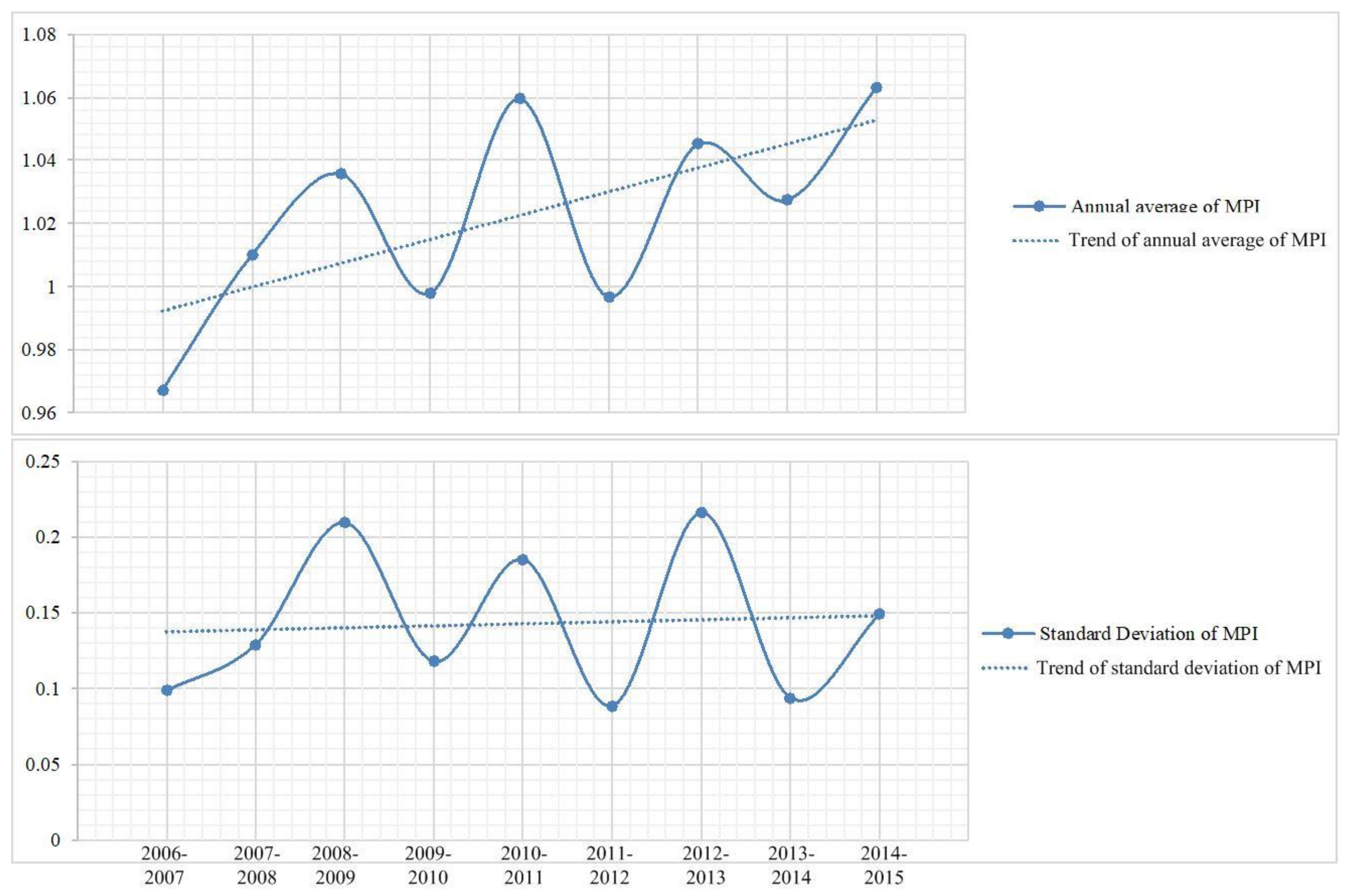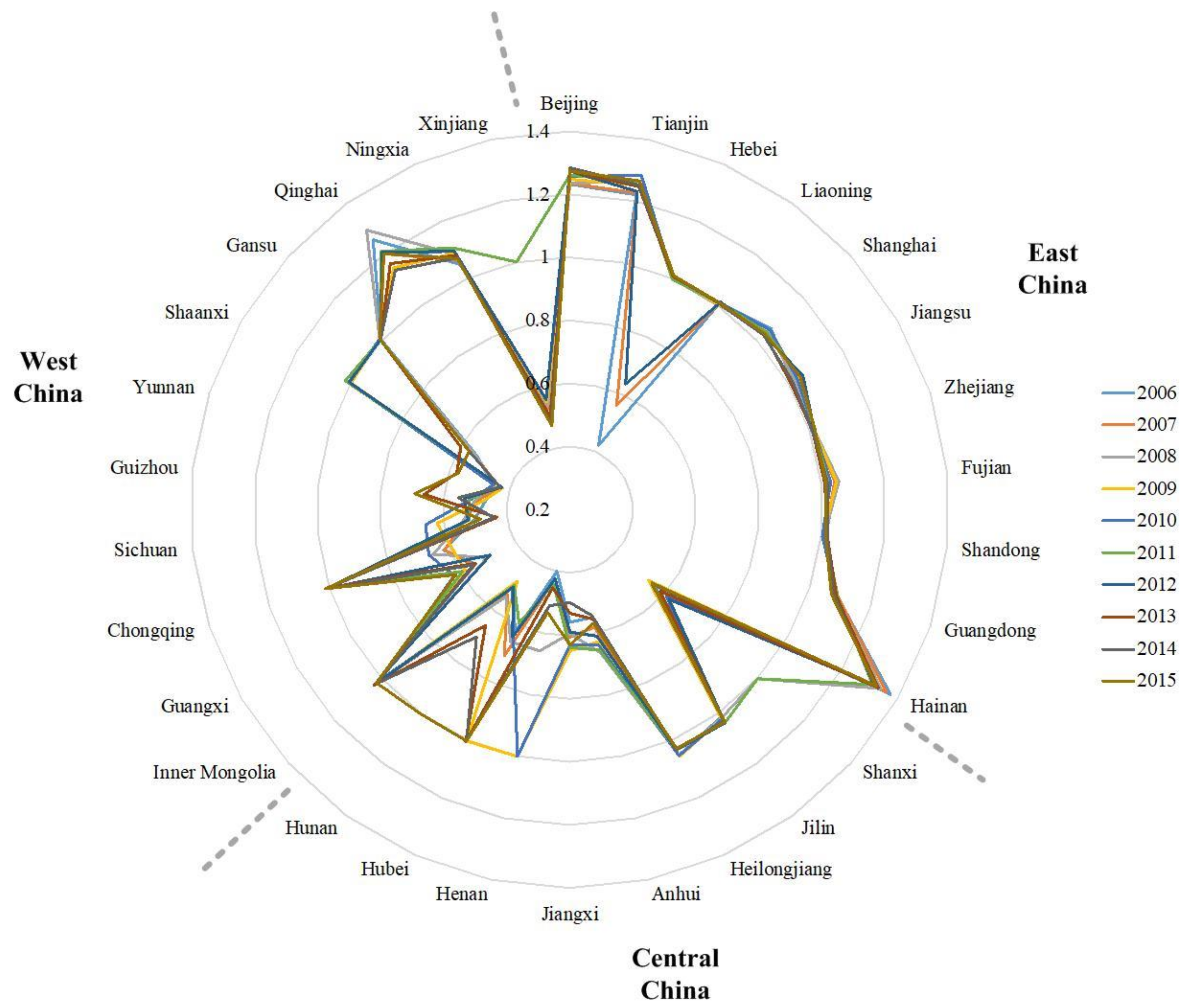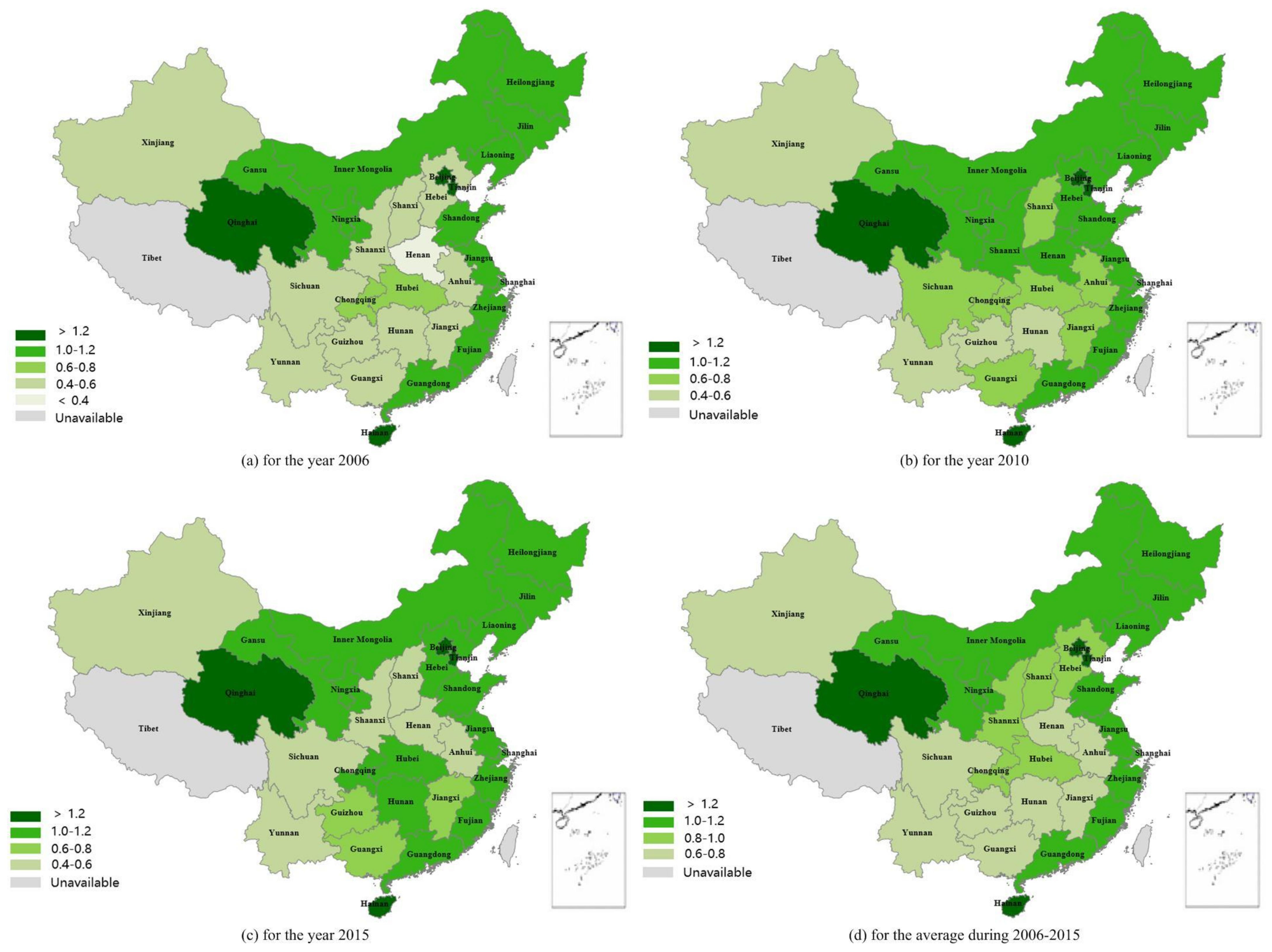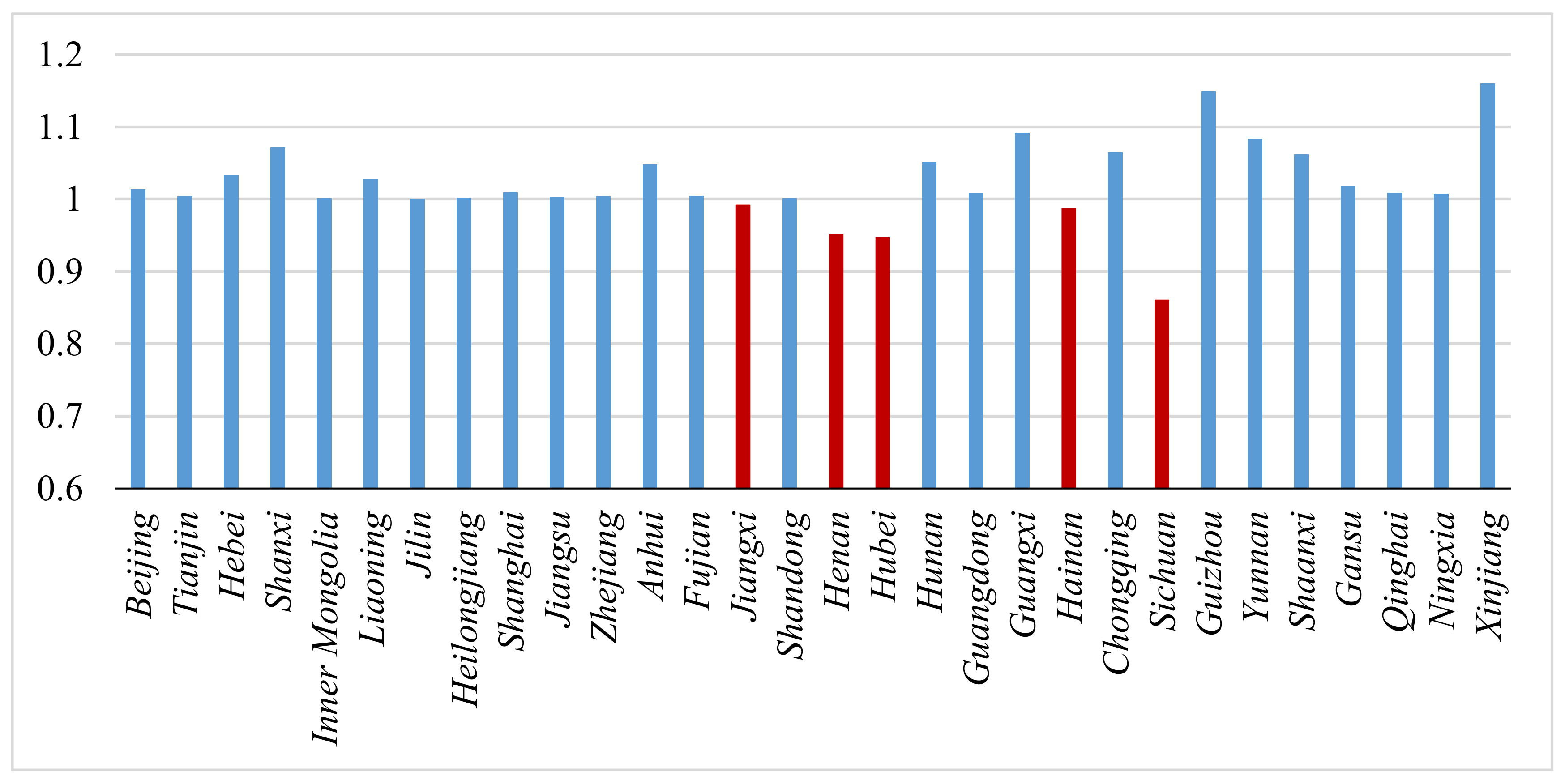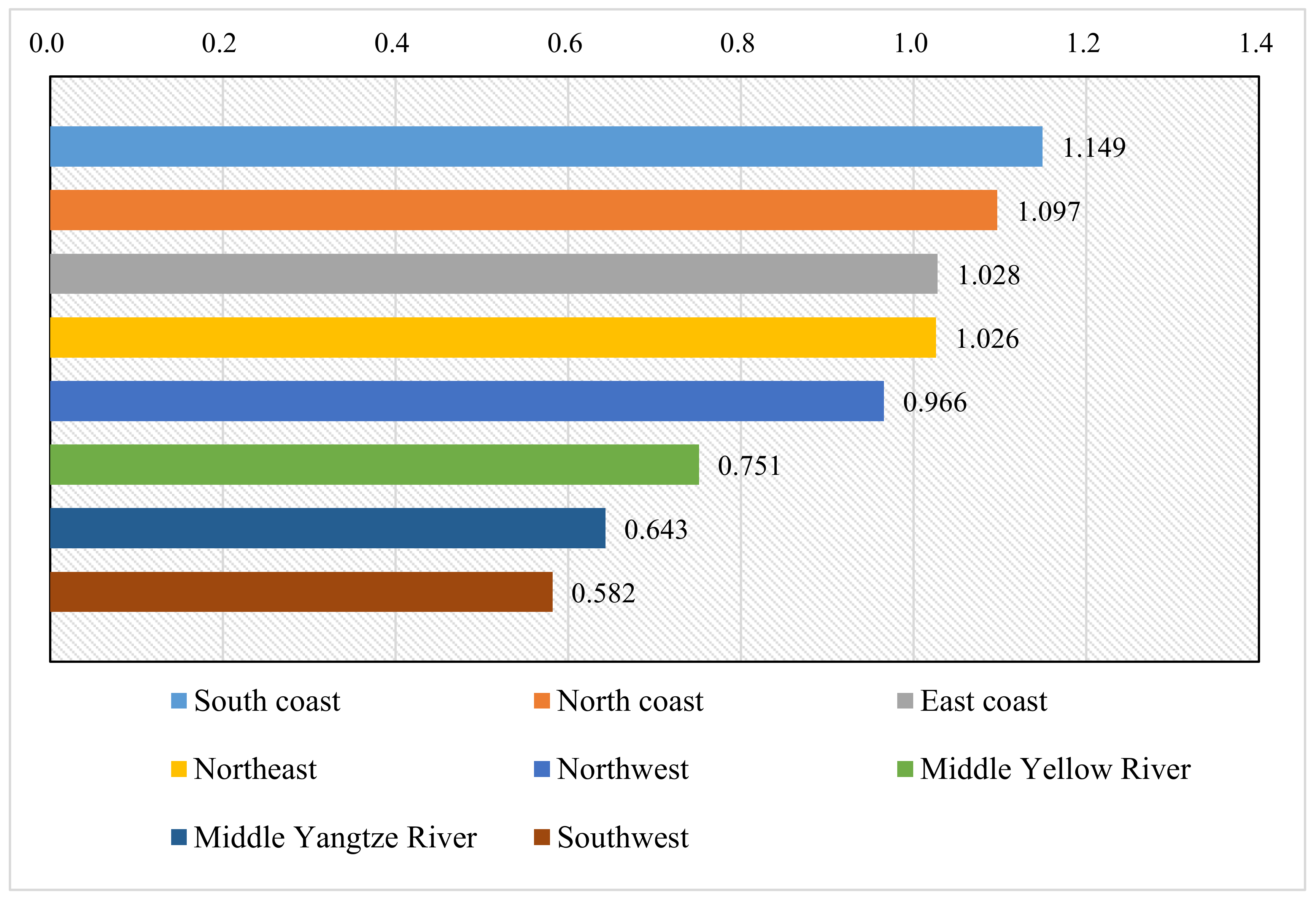1. Introduction
Urbanization began during the industrial revolution period when workers moved from rural areas to cities to obtain jobs in factories. It is one of the fundamental characteristics of the civilization of human society. In the contemporary era, urbanization commonly refers to the process of population flow from rural to urban areas [
1]. Government aims to generate multiple benefits through implementing urbanization programs, including, for example, economic growth, transportation convenience, better living quality, and harmonious urban-rural relationship [
2]. In fact, urbanization becomes an important social process in the 21st century, particularly in many developing countries such as China. The urbanization development in large countries including China has made a significant contribution to the progress of global urbanization. Since the implementation of reform and open policy in early 1980s, the urbanization process in China has experienced a rapid and unprecedented development era, with the increase of the urbanization rate from 17.92% in 1978 to 58% in 2017, giving an average annual increase rate of 1.03% [
3]. In comparison, the urbanization rate at global level increased from 38.48% to 54.73% during the same period of 1978–2017, giving an average annual increase rate of only 0.42% [
3].
In line with its dramatically fast urbanization process, China has been witnessing the largest scale of migration from rural to urban areas over last three decades, resulting in the huge increase of urban population from 172.45 million in 1978 to 792.98 million in 2016 [
3,
4]. It is widely considered that urbanization has been a driving power to the development of China across all sectors in the country [
2]. China has rocked up to the second largest country globally in terms of GDP scale, for which the urbanization scheme of the country has made the special contribution [
5].
Nevertheless, the immense scale of urbanization programs in China has been consuming vast amounts of resources, including labor forces, land, energy, water, timber, and other natural resources [
6]. It was reported that the water consumption in urban areas in China has risen sharply from 7.87 billion m
3 in 1978 to 56.05 billion m
3 in 2015 [
7]. The speed of resources consumption in China is alarming, particularly on those non-renewable resources for implementing urbanization programs. There are more than 400 Chinese cities suffering from severe water shortage [
7]. A number of reports suggest that resources consumption is not efficient in the current fast urbanization process in China. For example, Guan et al. [
7] found that the energy consumption per GDP in China is 2.3 times higher than that of the world’s average level, 4.1 times higher than that of the average level of European Union countries, 7.6 times higher than that of Japan, and even much higher than many developing countries. During the past four decades, large scales of agricultural land have been acquired in China for urban sprawl in the urbanization process, but yet significant amount of urbanized areas are unoccupied. The phenomena of unoccupied urbanized areas are referred as “Ghost City”, a typical type of land and capital waste in China [
8,
9]. Nevertheless, it has been widely appreciated that the conflict between limited supply and increasing demand of resources for urbanization development has become serious, particularly in developing countries [
1,
6,
10,
11,
12,
13]. It is therefore a pressing issue to pursue the efficiency in urbanization process in order to save resources for sustainable urban development.
As the world’s largest developing nation, China is determined to continue its urbanization process in the coming future, and an understanding on whether the resources are used efficiently in its current urbanization process is essential. This understanding can help reveal the quality of current urbanization process and the level of waste, if any, on various types of resources. Without the understanding, measures cannot be taken appropriately to improve the quality of urbanization process, consequently, the existing problem, such as “Ghost City”, will remain and even become worse, and the sustainability of urbanization will be sabotaged.
Urbanization is a complicated “input-output” system process, and its efficiency is widely measured by comparing the outputs or benefits gained with the resources inputted. An efficient urbanization process will be recognized if the process costs less resources whilst generates more benefits. Previous studies appreciated that the performance of urbanization efficiency is attributed by many factors, particularly the urban development modes and the composition structure between industrial sectors [
14]. In the context of a big developing country such as China, by examining the urbanization efficiency between provinces or regions, the experience and lessons gained in different regions can be mined for sharing with each other. This way will enable the improvement of urbanization efficiency across the country, which can in turn promote the sustainable urbanization process.
In order to measure urbanization efficiency, it is important to employ an appropriate measurement tool. According to previous studies, there are two typical efficiency measures, parametric methods and non-parametric methods. The parametric methods require pre-estimate hypothesis about the relations between inputs and outputs, for which Stochastic Frontier Analysis (SFA) model is representative. Non-parametric methods have no request for the prior hypothesis on the relations between inputs and outputs, and therefore they are considered to be able to avoid the possible problems caused by improper pre-estimation [
15]. There are several non-parametric methods, such as Data Envelopment Analysis (DEA) model and Free Disposal Hull (FDH) model [
16]. Among them, DEA is the most widely adopted, which was proposed originally by Charnes et al. [
17]. DEA is a heuristic model for evaluating the efficiency of a specific Decision-Making Unit (DMU) through comparing a group of DMUs with an efficient production frontier [
18]. In applying DEA, a set of input-output indicators will be adopted [
19]. This method has been applied in various fields for efficiency study, such as banking and insurance industries [
20,
21], governmental administration [
22], public transportation [
23,
24], regional economy [
25], as well as low-carbon economy development [
26].
Several previous studies have also applied DEA method in investigating the efficiency of urbanization development in China. For example, Jia et al. [
27] estimated the urbanization efficiency at both district and county levels in Chengdu city in the year 2015 based on a three-stage DEA model. In their study, land, capital, and labor are used as input factors, and economic performance, population, and social development are output indicators. By adopting jointly DEA method and Malmquist Productivity Index (MPI), Song et al. [
28] estimated the urbanization efficiency in a sample of ten prefecture-level cities in Shaanxi province in China for the period of 2003–2014. It was found that the overall urbanization efficiency in these cities declined during the surveyed period, and the gaps of efficiency performances between the cities increased. Zhang & Jiao [
29] applied DEA method for estimating the urbanization efficiency in Yangtze River delta for the period of 1990–2011. Their findings suggest that the overall urbanization efficiency in the area has improved significantly during the study period, but there was a clear spatial distribution of different levels of efficiency. Xu et al. [
30] adopted DEA-Cross model and investigated the urbanization efficiency in twelve prefecture-level cities in Gansu province for the period 2005-2009, and classified these cities into three categories, namely, “high inputs with high outputs”, “high inputs with low outputs”, and “low inputs with low outputs”.
Some other scholars adopted DEA method for evaluating the eco-efficiency of cities. For example, Yin et al. [
14] adopted DEA method in evaluating the eco-efficiency of 30 Chinese provincial capital cities for the year of 2009, in which the input factors are capital, labor, land, water consumption, and energy consumption, and the output indicators are GDP value and pollutant emission. Their study suggests that half of the provincial capital cities in China are fairly eco-efficient. By adopting the Super-efficiency DEA model, Bai et al. [
31] measured the relationship between urbanization and urban eco-efficiency of prefecture-level cities in China during the period 2006-2013, by employing the input factors of labor, capital, land, and resources consumption and the output factor of economic level. Their study reveals that during the urbanization process, urban eco-efficiency at prefecture-level cities in China has experienced a three-stage evolution, namely, increasing, declining, and increasing.
In the international context, there are handful studies using DEA method for analyzing the efficiency of urban development. For example, Gudipudi et al. [
32] estimated the urban eco-efficiency of 88 European cities by using an advanced regression residual method and DEA model, suggesting that larger cities are usually more eco-efficient and that Stockholm, Munich, and Oslo have relatively better performance. Deilmann et al. [
33] investigated the urban economic and ecological efficiency respectively for 116 cities in Germany from the perspective of land consumption. Their study reveals that the medium-sized and industrialized cities in Germany make the most efficient use of land. Morais & Camanho [
34] adopted DEA model for evaluating the performance of 206 European cities in concerns of urban life quality, with considering the outputs of demography, economy, education, environment, transport, and culture. They found that those best performance cities are mainly located in Germany, Netherlands, and Belgium, whilst those poor performance cities are largely located in Romania, Italy, and Poland.
The above discussions demonstrate that the outputs used in previous studies for measuring urbanization efficiency are usually limited to benefit indicators such as economic performance or GDP value. However, urbanization process does not only generate benefit outputs but also produce undesirable outputs such as greenhouse gas emission, water pollution, and other types of pollutant discharge. Therefore, both good outputs (benefits) and undesirable outputs should be taken into account in order to reflect holistically the effects brought by urbanization process. Furthermore, the performance of urbanization efficiency is dynamic, which changes in line with social-economic development and environmental performance. Nevertheless, little existing study has investigated this dynamic change. With these limitations, the existing research results on urbanization efficiency are considered not able to provide adequate information to support decision-making for efficiency improvement, which would further hinder the practice of sustainable urbanization, particularly in large developing countries such as China.
This study therefore aims to evaluate the efficiency of the fast urbanization process in China from a holistic perspective, in which a set of input-output indicators is employed, and both desirable and undesirable outputs are incorporated. This holistic efficiency measurement will be used to measure and compare the urbanization efficiency between different regions and individual provinces. On the other hand, the dynamic changes of the urbanization efficiency during the surveyed period will be tracked. Effective measures for improving the urbanization efficiency in the context of China will also be discussed.
The rest of this paper will be organized as follows:
Section 2 describes the research method.
Section 3 presents the composition of input-output indicators and research data.
Section 4 presents data analysis.
Section 5 discusses the performance of urbanization efficiency at both provincial and regional level in and the effective measures to improve the efficiency performance.
6. Conclusions
Urbanization is an “input-output” system process. This study suggests that the input-output indicators should incorporate both desirable and undesirable outputs in order to measure properly the efficiency of urbanization. By using a set of holistic input-output indicators, this study has examined the urbanization efficiency in the context of China. The findings demonstrate that the overall efficiency in the fast urbanization era in China is relatively low, but a moderate level of improvement has been achieved. At both the regional and provincial levels, the differences between good and poor performers are very significant. In general, the provinces with well-established social and economic foundation have good performance, such as Beijing, Tianjin, Guangdong, Shanghai, Fujian, and Jiangsu. The bottom players include Yunnan, Sichuan, Guizhou, Guangxi, Xinjiang, and Henan. At the regional level, it appears that Eastern China is the best region, followed by Central and Western parts, and the Southwest region has the worst performance.
The implementation of urbanization in the past years in China has presented both good experiences and problematic lessons. Exemplary measures include restructuring the composition of industrial sectors, adopting energy saving policies, promoting green building, improving the quality of public services and infrastructures, allowing migrant workers share urban benefits, encouraging the migrants to integrate into urban society by playing down “hukou” effects, and others. All these are found effective for raising urbanization efficiency. On the other hand, the typical lessons have also been received from the urbanization practice in those poor performers, for example, the adoption of extensive development pattern, the phenomenon of brain-drain, the lower priority given to technology innovation, and others.
Urbanization is adopted as the driving engine for development in the contemporary time particularly in those large developing countries such as China. However, only if the scheme of urbanization is efficient can it make contributions to the mission of sustainable development for either a region or nation. This study provides important references for understanding the efficiency of the ongoing fast urbanization in China. By appreciating that the fast urbanization has poor efficiency in general, the Chinese central government can review the ongoing urbanization practice and introduce measures to improve the efficiency. The understanding of the variations of urbanization efficiency between different regions and provinces helps the local governments formulate policy measures to improve their urbanization practice, by considering both the good experiences gained in those good performers and the problematic lessons encountered by those poor performers. Furthermore, this study also makes valuable contributions to the development of literature in the discipline of urbanization efficiency. It particularly highlights the importance of incorporating undesirable outputs into the traditional assessment approach for examining urbanization efficiency. The research framework adopted can be further applied for studying the efficiency of urban development in other countries.
Nevertheless, the authors appreciate that several significant issues associated with urbanization efficiency, particularly in the context of China, have not been fully investigated, such as land acquisition for urban sprawl, housing conditions, and urban benefits for rural-urban migrants. Whilst these issues have been addressed in discussions in
Section 5, it is recommended to investigate them in details in future study. Other issues, such as comparison on the factors affecting urbanization efficiency between different countries at international level and the effectiveness of different policy instruments for improving urbanization efficiency under different circumstances, are also recommended as important research questions for future study.
